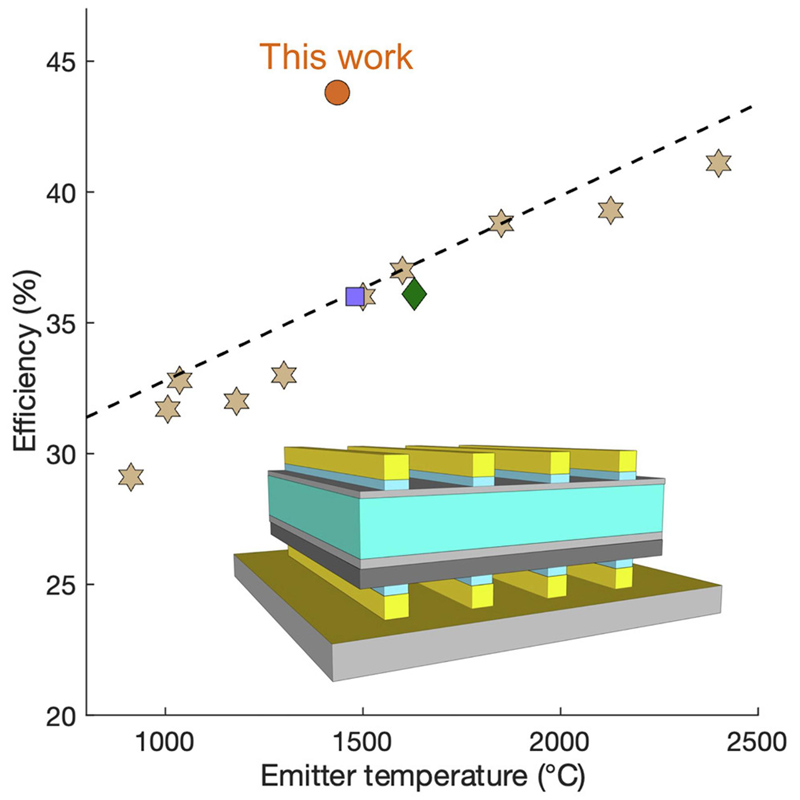Send this article to a friend:
May
27
2024
Send this article to a friend: May |
Thermal power cell harvests electricity from heat at record efficiency
With renewable energy prices dropping fast, the barrier now is their intermittency – the first point any renewable energy skeptic will throw at you is “but what happens at night or when the wind isn’t blowing?” A little thing called “batteries” can help there, and there’s no shortage of grid-scale storage systems that can save energy for (literally) rainy days. That includes scaling up classics like lithium-ion batteries, or more experimental designs like iron-air, water-in-salt, flow batteries, or a variety of gravity-based systems. One of the most promising avenues is storing energy as heat. The medium itself can be broad – sand, molten salt, volcanic ash, carbon blocks, clay bricks and many others are in the works – but unfortunately getting the energy back out of heat and turning it into electricity can be the tricky part. That’s where the new system comes in. Developed by researchers at the University of Michigan, this device works on the principle of thermophotovoltaics. It’s similar to solar cells, which are photovoltaic, generating electricity (volts) from light (photons). Thermophotovoltaics obviously add heat (thermo) to the mix. In practice, that means they absorb photons from the infrared part of the spectrum, rather than the higher-energy, visible-light photons that solar cells capture. The new thermophotovoltaic cell was tested with silicon carbide as the heat-storage material, although it could be swapped out for whatever else works. This is surrounded by a semiconductor material made of indium, gallium and arsenic, carefully designed to capture the broadest range of photons, and specifically those produced by the heated material. When the team heated the material to 1,435 °C (2,615 °F), it starts radiating thermal photons at a range of energy levels, with 20 to 30% of them able to be captured by the semiconductor. To make use of some of those with higher or lower energies, the cell contains a thin layer of air after the semiconductor, followed by a gold reflector layer. This bounces some photons back to the semiconductor to be converted into electricity, while others bounce back to the heat storage material, giving them another chance of being emitted as the right kind of photon.  A diagram of the new thermophotovoltaic cell, along with a chart of its performance against others of its type
Roy-Layinde et al.
This design results in a total power conversion efficiency of 44%. That makes it much more efficient than others that operate at the same temperature, which top out at 37%. Other designs have surpassed 40% before, but they work at much higher temperatures that can be less feasible in many situations. The idea is that the storage material can be heated up using electricity generated by a wind or solar farm, or directly absorbing excess heat from industrial processes or solar thermal energy systems. It might only have half the efficiency of lithium-ion batteries, but being much safer and cheaper to make and run means it’s still cost-effective to throw out half your electricity anyway, especially since it’s no longer a finite resource. The team says that there’s still some room to grow, too. “We’re not yet at the efficiency limit of this technology,” said Stephen Forrest, contributing author of the study. “I am confident that we will get higher than 44% and be pushing 50% in the not-too-distant future.” The research was published in the journal Joule.
|
Send this article to a friend:
 |
 |
 |